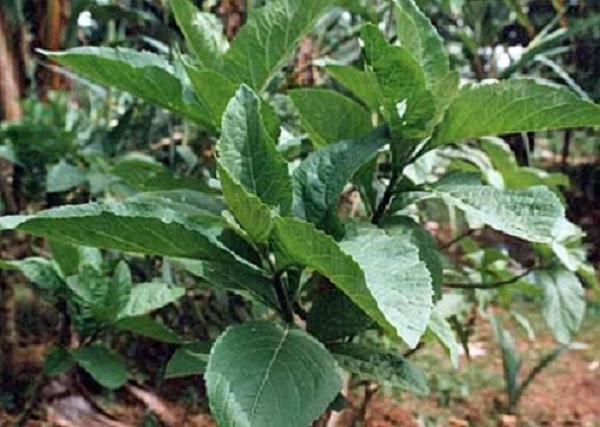
By Prof. Ernest B. Izevbigie
Editor’s note: This piece is a rejoinder to our August 2023 interview with Consultant Endocrinologist, Dr Akiniyi Akinmokun, captioned “No evidence bitter leaf reduces blood sugar” (Pg 50)
Let me thank Dr Akinmokun for his contribution and to say that it is fortunate (NOT unfortunate) to believe in credible scientific data/evidence, in my view. Hitherto, the field of traditional medicine (TM) had been dominated by untrained (lack of training in either basic/ clinical sciences and/or medicine) practitioners. Consequently, TM practitioners faced the issues of toxicities and impurities and lack of standardisation/dosages for optimum efficacy of their preparations.
The good news is that in the last two decades, some of these problems have, at least, attenuated, if not surmounted. Studies conducted in the last two decades have provided quite compelling evidence to support not only that bitter leaf possesses antidiabetic (sugar-lowing) property but also elicits protective effects on the pancreas, liver, kidney and more, in animals, humans included. However, the focus of this article will be on glucose/ sugar reduction.
For the purpose of clarity, it is important to note here that the scientific name for bitter leaf is Vernonia amygdalina (VA); “aqueous” means water; “sugar” also means “glucose”, and both will be used here interchangeably.
What is diabetes?
Diabetes mellitus (DM) is a chronic disorder in which the body either does not produce enough or respond to insulin, resulting in elevated sugar/glucose level in the body. Diabetes mellitus affects millions of people worldwide and the prevalence of this disease was projected to reach 300 million before year 2025 (Erasto et al., 2009). V. amygdalina is the most popular antidiabetic traditional herbal remedy in Nigeria (Gbolade, 2009).
The lengthy evidence of the antidiabetic property of bitter leaf spans across cell culture, animal models, and clinical investigations (studies on humans).
Sources/scientific references
Cell culture models. In 2009, Erasto and colleagues observed and reported that aqueous extracts Vernonia amygadalina (VA) increased glucose utilisation in mouse muscle cell line (C2C12 cells), and Chang-liver cells but no effect on 3T3-L1 fibroblast cells. These investigators concluded as follows: “These results, especially of the water extracts, strongly corroborate the ethno-medicinal uses of VA (bitter leaf) as an antidiabetic plant’’ (Erasto and colleagues, 2009).
Animal model – In 2000, Jayaweera and colleagues conducted a review of all the published scientific articles concerning the antidiabetic effects of VA in many, if not all, scientific data bases – such as Frontiers, Health STAR, MDPI, MEDLINE, PubMed, Taylor, Francis, Scientific Direct, Scopus, Springer, Wiley, American Diabetes Association – from 2000 to 2022 (22 years). After an exhaustive review, the investigators concluded that VA was the most medically beneficial plant in the genius vernonia, and that it possesses several properties including antidiabetic property (Jayaweera and colleagues, 2022).
In another investigation by Osinubi, using adult male Sprague Dawley rats rendered diabetic with alloxan drug, it was observed that animals treated with 500 mg/kg of body weight of VA produced significant reduction in blood glucose concentrations in both normoglycemic (non-diabetic) and diabetic rats, 1-12 hours after acute treatment, compared to controlled or untreated animals. The glucose–lowering property of VA was comparable to that of chlorpropamide, an antidiabetic drug belonging to the class of sulfonylurea (Osinubi).
In another study, using adult Albino Wister rats (24 animals: 12 males and 12 females) were divided into six groups of four animals each. Hyperglycaemia was induced by alloxan drug. V. amygdalina (VA) was administered orally at 2, 4, 6, 8 and 10% of diet before meal for 5, 10, and 15 days respectively. Results showed that VA remarkably decreased blood glucose level from a value of 4.44 ±0.2 to 1.66 ±0.02 mmol / L (more than 60% decrease). Okugbo and Killian (2022) showed a significant reduction both in diabetic and normoglycemic rats treated with VA.
Clinical studies (human subjects). Okolie and colleagues conducted studies on healthy humans to evaluate the effects of VA on postprandial blood sugar concentrations. Fifty (50) grams of VA was administered by squeeze-wash-drink to chew raw to the subjects who also served as their own controls (n=8) in a randomized order. Blood glucose levels were evaluated at fasting (time= 0), and postcranially 30 minutes interval for two hours. VA elicited significant reduction in blood glucose at most postprandial time points and for area under curve (AUC). Clinical studies on Cambodians showed VA reduces blood sugar levels (Hul and colleagues, 2021)
Bitter leaf potentiates/ synergises with Metformin activity
Many conventional and modern medicines trace their origins to natural products. For example, Metformin, an antidiabetic drug in the class of biguanide, is a derivative of the French Lilac called Galega officianalis, which is a herbal plant (like bitter leaf). It was first shown to lower glucose in 1918, and then became traditionally used in Europe for the treatment of diabetes, as early in the 1920s.
Metformin antidiabetic property was later discovered by a French diabetologist, Jean Sterne) in 1957 (Clifford 2017). Furthermore, results from many investigations have shown that bitter leaf potentiates/ augments or synergises with Metformin (Okugbo and Killian, 2022; U. Adikwu and colleagues, 2010; Oluwayemi and colleagues, 2018).
The next article likely to emanate from this discussion will be on the mechanisms of actions
Literature citation
- U. Adikwu Michael; B Uzuegbu David; C. Okoye Theophine; F. Uzor Phillip; Adibe Maxwell Ogochuku, and V. Amali Benson. Antidiabetic effect of combined aqueous leaf extract of vernonia amygdalina and metformin in rats, 2010.
- Jayaweera, U; Akowuah, G.A.; Ling, C.Y; Kumar, P,V; and Herapathdeniya, S .Diabetes and vernonia amygdalina dilile (Asterceae). Biointerface Research in Applied Chemistry 12(4), 4496- 4517, 2022.
- Osinubi, AAA. Effects of vernonia amygdalina and Chlorpropamide on blood glucose. Pharmacology. Med. J. of Islamic world Academy of Sciences 16: 3115’-117.
- Okolie, UV; Okeke, CE; Oli, JM; and Ehiemere, IO. Hypoglycemic indices of vernonia amygdalina on postprandial blood glucose concentration of healthy hum of ans. Afri. J. Biotechnology 7(24), 4581- 4585, 2008.
- Nwoguikpe R. The effect of extract of bitter leaf (vernonia amygdalina) on blood glucose level of diabetic rats. Int. J. Biological and Chemical Sciences 4(3).
- Okugbo, OT; and Killian, AE. Antidiabetic effect of aqueous extract of vernonia amygdalina and dacryodes edulis leaves and their combination in alloxan-induced diabetic rats. BIU J Basic & Applied Sciences 7(1): 105-11, 2022.
- Erasto, P.; Venter, MV; Roux, S; Grierrso, DS; and Afolayen, AJ. Effect of leaf extract of vernonia amygdalina on glucose utilization in Chang-Liver, C2C12 maurine muscle and 3T3-L1 Cells. Pharmaceutical Biology, 7(2), 2009.
- Gbolade, AA. Inventory of antidiabetic plants in selected districts of Lagos State, Nigeria. J. Ethno pharmacology 121, 135-139, 2009
- Clifford, J. Metformin: historical Overview. Diabetologia 60(9) 1566- 1576, 2017
- Oluwayemi, AT; Nwachuku, EO, and Holy, E. Effects of the interaction of metformin and vernonia amygdalina (bitter leaf) on streptozotocin-induced diabetic rats. Asian J Biochemistry, Genetics, and Molecular Biology 1(2): 1-8, 2018.
- Hul, M; Bov, K; Bun, P; and Keo, S. The antidiabetic activity of vernonia amygdalina delile native to Cambodia. Asian J. Pharmacognosy 4(1): 5-7, 2021
Professor Ernest B. Izevbigie is an emeritus vice-chancellor, multiple U.S. patent holder, and distinguished scientist, who received his training in Growth Biology/Nutritional Biochemistry from Michigan State University, East Lansing, Michigan, USA. (PhD); followed by a post-doctoral training at the National Institute of Dental & Craniofacial Research (NIDCR), National Institutes of Health (NIH), Bethesda, Maryland, USA.














Prof. Enerst B. Izevbigie work is in line with traditional knowledge & belief(i have met elderly persons who use it & confirm it’s efficacy over many years now.)If i may add the Bitter leaf specie in West Africa & Nigeria in particular has two variants the other being the River Side variant both equally have coagulant properties i.e they aid blood cloth serving as first aid for cuts/bleeding when rinsed with clean water(this is demonstrated in historic films eg Robin Hood of Sherwood.)